Sculpture Tools for Clay
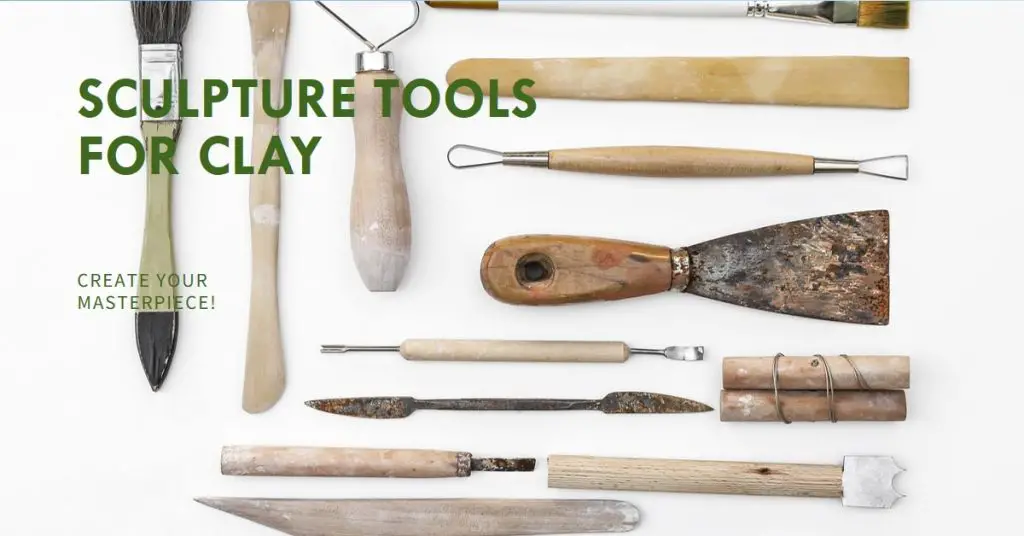
If you’re a fan of clay sculpting, then you know the importance of having the right sculpture tools for clay at your disposal.
With so many sculpture tools for clay out there, it’s hard to know where to start and what to invest in.
That’s why we’ve put together this comprehensive guide on 7 essential sculpture tools for clay that every sculptor should have in their toolbox.
As an avid clay sculptor myself, I understand how overwhelming it can be trying to decide which tools are necessary and which ones aren’t worth the investment.
That’s why I’ve tested countless tools over the years and narrowed down my collection to these 7 tried-and-true essentials.
The Vital Role of Sculpture Tools in Clay Artistry
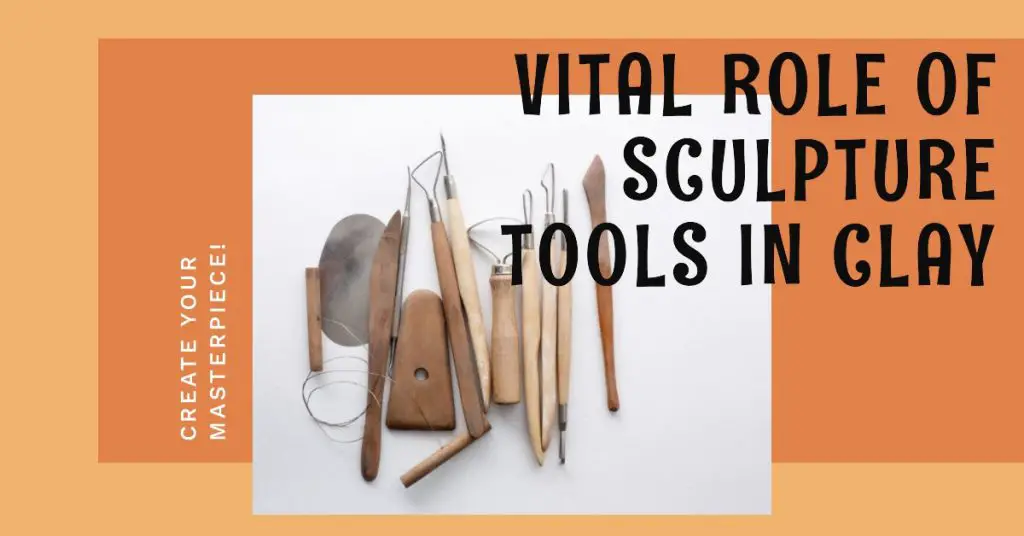
Sculpture tools are essential for artists working with clay. They offer a wide range of possibilities for shaping and carving clay into the desired form.
Clay is pliable and can be easily manipulated, but without the proper tools, creating the intended shapes and textures can be challenging.
Sculpture tools give artists precision in their work, allowing them to create intricate details that bring their artwork to life.
In the world of clay artistry, sculpture tools come in vast shapes and sizes. Each tool serves its unique purpose in transforming a lump of clay into a masterpiece.
From basic loop tools used for carving out large sections of a sculpture to niche wire-end brushes utilized for finer detailing, each tool offers endless potential when creating textures and shapes in sculpture.
Sculpture tools truly are an artist’s best friend. They allow artists to bring their creative visions to life while giving them full control over each detail they include in their work.
Using different types of sculpture tools, artists can manipulate clay into various forms that would otherwise be impossible without them.
In the next section, we will explore some of the most common basic sculpture tools used by clay artists and how they are used to shape and carve sculptures from raw clay materials.
9 Best Sculpture Tools for Clay
1. Xiem Modeling Tool Set
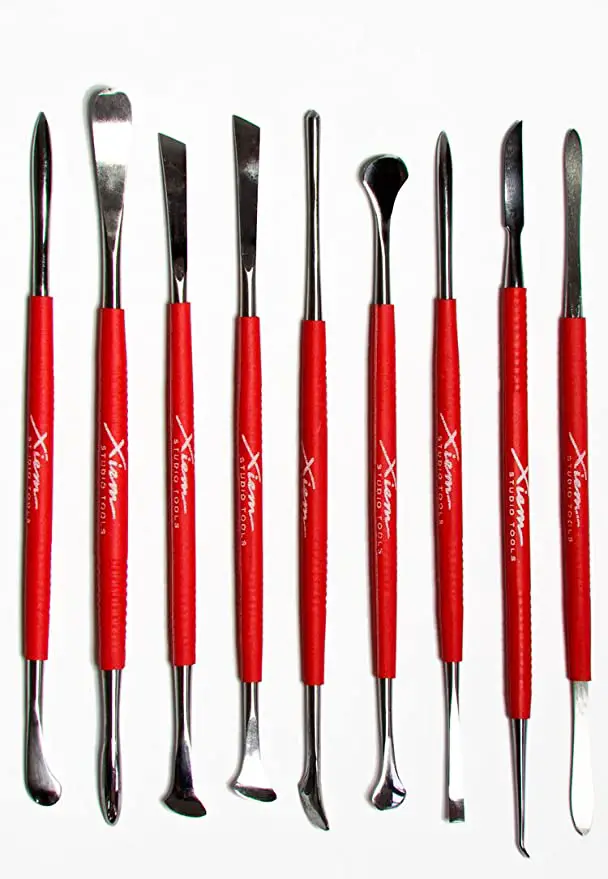
This set represents excellent value for money, and it includes a wide range of tools suitable for a wide range of sculpting projects.
2. Sculpey Stainless Steel Clay Tools Set
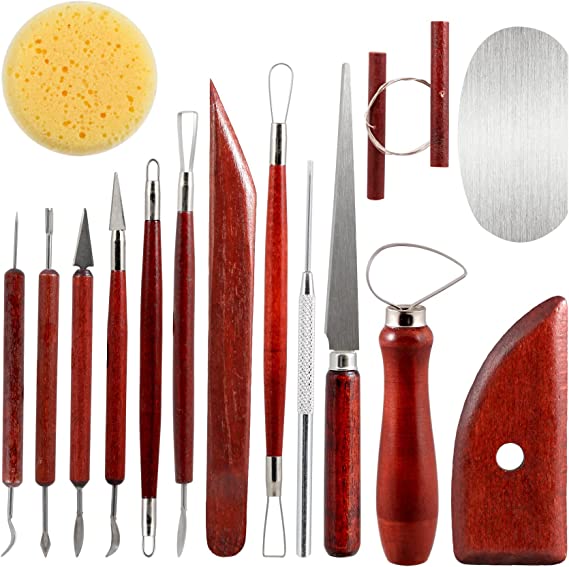
These dotting tools are perfect for adding intricate patterns and small details to the clay creations you’ve made.
3. Needle tool clay sculpting tool
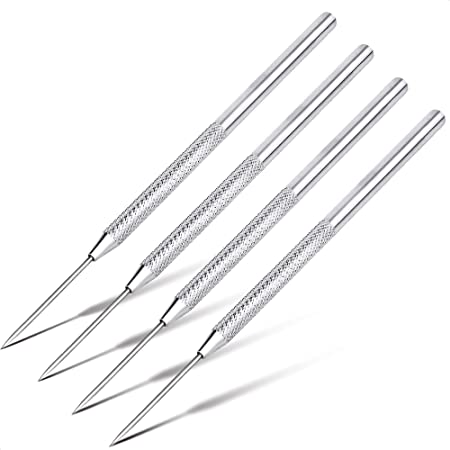
A needle tool is a versatile tool that can be used to make holes, add texture, and smooth out edges, among other things.
4. Pottery Sponge – 3 Sets of 3 Densities
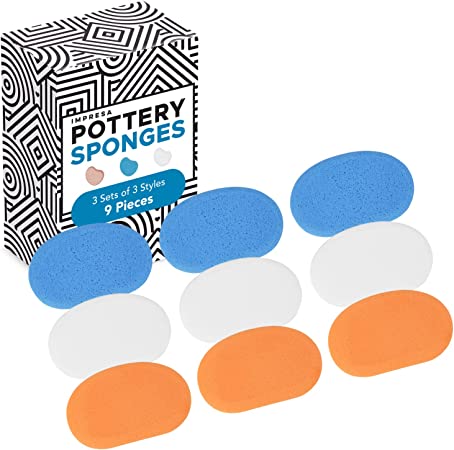
A sponge tool is an excellent tool for adding texture to clay projects. It can be used to create a variety of effects such as stippling, sponging, and blending.
5. Mud Pottery Wire Tool
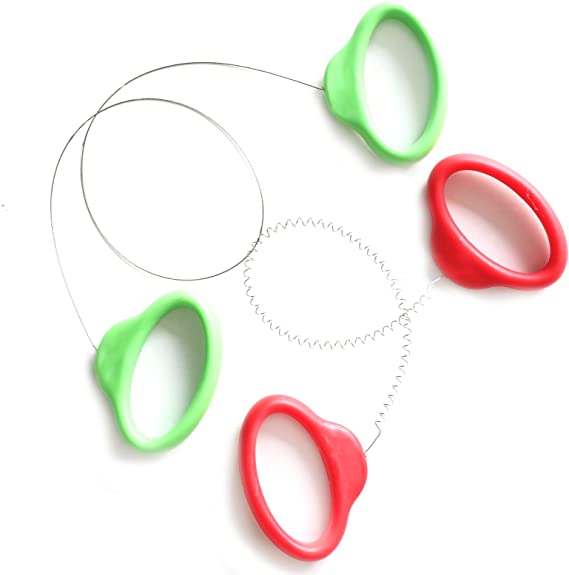
You can use a wire tool to add intricate details and patterns to your clay projects. They also have the potential to create texture and dimension.
6. Wooden Handle Fettling Knife
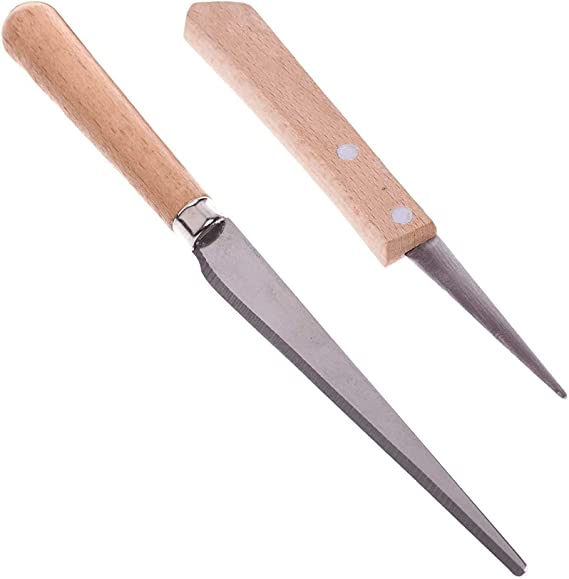
A knife is a multipurpose instrument that can be put to work in a variety of contexts, including but not limited to cutting, scoring, and carving.
7. RUBFAC Clay Tools
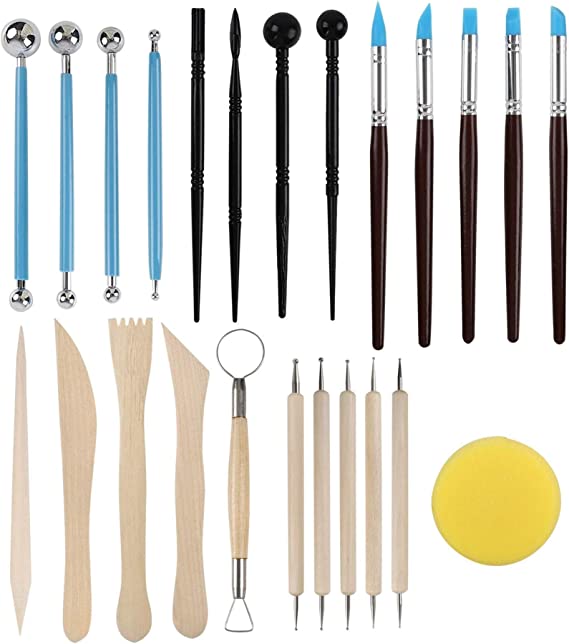
If you’re looking to take your clay sculpting skills to the next level, then look no further than RUBFAC Clay Tools.
These high-quality tools have been designed with precision and attention to detail in order to provide an unparalleled sculpting experience.
Durably made with a comfortable ergonomic handle, these tools are perfect for creating intricate shapes and designs in any type of clay or ceramic medium.
NOTE: These are just a few of the many different tools that are available for sculpting clay, but there are many more. Your best options for tools will be determined by the type of clay you’re working with as well as the kinds of creations you’re making with the clay.
Basic Tools
Before getting into more specialized tools, it’s important to understand the basics. Basic sculpture tools for clay include wire cutters, loop tools, and wooden modelling tools.
Wire Cutters
Wire cutters are an essential tool for any clay artist. They come in various sizes and shapes, but they all serve the same purpose: cutting through clay.
Wire cutters can be used to slice through large chunks of clay or to trim excess pieces from a sculpture. They are also helpful for creating sharp lines and edges in a piece.
Loop Tools
A loop tool is a handheld tool with a thin metal wire looped at one end.
Loop tools come in many different shapes and gauges of wire and are used to create smooth curves on the surface of the clay.
They can also be used to carve out hollows and trenches from the surface of a sculpture.
Wooden Modeling Tools
Wooden modelling tools are another basic sculpting tool every artist should have in their kit.
These simple tools are made from wood or bamboo and come in various shapes with different tips that allow artists to easily shape, smooth, blend, and carve their sculptures.
Wooden modelling tools can be used on both wet and dry clay surfaces.
To understand how these basic tools work together, let’s take an example of creating a simple bowl-shaped vessel using these three basic sculpting tools:
- Create the base: begin by shaping a chunk of wet clay into your desired bowl on your pottery wheel or hand-building it using slab techniques.
- Cut out excess: use wire cutters to remove any excess portions of clay from the base and define the bowl’s circumference.
- Refine the shape: use wooden modelling tools to refine the shape by smoothing and blending edges or corners.
- Add texture: Use loop tools to create texture on the surface of your bowl. You can carve lines, grooves, or patterns using different wire gauges in your loop tool.
These basic sculpting tools can be combined in endless combinations to create various shapes and textures in clay sculptures.
In addition, they are affordable and easy to find in most art supply stores.
As a beginner clay artist, it’s important to familiarize yourself with these basic sculpting tools and practice using them before moving on to more advanced techniques.
Advanced Tools
While basic tools are essential for any clay sculptor, advanced tools are where true creativity and craftsmanship can shine through.
These specialized tools can help create intricate textures, fine details, and unique shapes that cannot be achieved with basic tools alone.
Here are some examples of advanced sculpture tools:
Ribbons
Ribbons are thin metal strips that can cut through soft clay with precision. They come in various sizes and shapes and can create precise lines or add subtle texture to a sculpture.
Ribbons work especially well to carve small details in figurines, such as hair or clothing folds. When using ribbons, it’s essential to have a steady hand and work slowly and deliberately.
It’s also important to keep the ribbon clean by wiping it off after each use to prevent debris from sticking to the surface.
Paddles
Paddles are large, flat pieces of wood or plastic that can be used to shape large areas of clay quickly.
They’re commonly used in hand-building techniques such as coil pots or slab-built sculptures. Depending on the desired effect, paddles come in various sizes, shapes, and materials.
When using paddles, it’s crucial to keep them smooth and free of rough edges that could leave marks on the clay surface.
Sanding the paddle with sandpaper periodically will ensure its smoothness over time.
Sponges
Sponges are a versatile tool that is useful when working with wet clay. They’re great for smoothing rough surfaces, blending seams together, or creating unique textures by gently pressing into soft clay.
Sponges come in various levels of coarseness depending on their intended use. When using sponges, keeping them clean and free of any debris or clay particles that could clog the pores is crucial.
Rinse them regularly under running water and allow them to dry before storing them.
Advanced sculpture tools can help elevate a clay sculpture from ordinary to extraordinary.
Experimenting with different tools and techniques can lead to exciting discoveries and unique artistic expressions in clay sculpting.
Niche Tools
The Art of Detail: Introducing Niche Tools for Clay Sculpture
While basic and advanced tools are the staples of most clay artists’ toolboxes, a few lesser-known but incredibly useful niche tools can help achieve very specific effects in a sculpture.
These niche tools include needle tools, fettling knives, and wire end brushes. This section will explore the various uses and benefits of these invaluable niche sculpting tools.
Needle Tools: The Secret Weapon for Delicate Details
Needle tools are essential tools for detailed work on clay sculptures. They consist of a long, thin metal rod with a sharp point at one end.
With this tool, you can create intricate textures and patterns, add fine details to your sculpture or even carve grooves into the clay surface.
Needle tools come in various sizes and shapes, making them versatile for achieving different effects. One popular use for needle tools is creating hair on figurines or animals.
Using gentle strokes with the needle tool to create fine lines on the surface of the clay gives it an elegant look that is difficult to achieve with other sculpting techniques.
Other uses include adding texture to clothing or intricate designs to jewellery or pottery.
Fettling Knives: The Precision Tool for Smooth Edges
Fettling knives are another useful niche tool many sculptors find indispensable when working with clay.
These knives are designed specifically for cutting through thick layers of wet or dry clay when creating edges on sculptures.
Fettling knives come in many shapes and sizes, making them versatile for reaching corners or cutting precise curves.
These knives can be used both horizontally and vertically, depending on what type of cut you want to make.
Their sharp blades allow delicate control over every move, ensuring that no extra pressure is applied while working around curves.
This precision is especially important when sculpting faces or other fine details where even the slightest error can ruin the entire sculpture.
Wire End Brushes: The Perfect Finishing Touch
The wire end brush is a tool that many clay artists use to add texture and depth to their sculptures’ surfaces.
These brushes have metal bristles at one end, which can be used to create scratches or grooves on the clay surface.
They can also remove excess clay from hard-to-reach areas, such as the inside of small figurines. Wire end brushes are perfect for creating a rough, rustic look in your sculptures.
They add depth by creating small roughness on the sculpture’s surface, which looks appealing and creates an interesting texture to work with.
Moreover, they are incredibly versatile in sizes and shapes, making them perfect for reaching every nook and corner of a sculpture.
While these niche tools may not be as well-known as basic or advanced tools, they are worth exploring for any serious clay artist looking to achieve specific effects in their sculptures.
You can create intricate patterns and details with needle tools, fettling knives offer precise cuts with smooth edges, and wire end brushes provide finishing touches to give your sculpture character and personality.
Maintenance & Care
Clay sculpture tools are a valuable investment for any clay artist, and proper maintenance can ensure their longevity and performance.
Regularly cleaning your tools will help keep them in good condition while minimizing the risk of damage or contamination to your clay sculptures.
Here are some tips for maintaining the quality of sculpture tools:
Tips on Maintaining the Quality of Sculpture Tools for Longevity
- Keep your tools clean after each use. Wipe off excess clay with a damp cloth or paper towel.
- Remove any stubborn bits of clay using a plastic scraper or toothbrush.
- Soak tools in warm water to loosen any remaining clay if necessary.
- Dry thoroughly after cleaning to prevent rust formation.
- Additionally, keeping your tools sharp is essential for their performance and longevity.
- Dull blades can cause frustration and damage to your sculptures, so it’s important to use a sharpening stone or file regularly.
Best Practices for Cleaning and Storing Various Types of Sculpture Tool Materials
Different sculpture tool materials require specific care and handling to avoid damage or corrosion.
Here are some best practices for cleaning and storing various types of sculpture tool materials:
- Metal Tools: Avoid soaking metal sculpting tools in water, as this can lead to rust formation on the blades over time. Instead, remove metal tools with a dry cloth after use, followed by a light coat of oil on the blades to prevent rust formation.
- Wooden Tools: Do not soak wooden sculpting tools in water, which can cause warping or cracking over time. Instead, wipe wooden handles with a damp cloth after use, followed by drying thoroughly before storage.
- Plastic Tools: Plastic sculpting tools are generally easy to clean but should be stored away from direct sunlight as they may become brittle if exposed to UV rays for extended periods.
By following these tips and best practices for maintaining your clay sculpture tools, you can ensure their longevity and performance, allowing you to create quality sculptures for years.
Proper Sculpture Tools Yield High-Quality Clay Sculptures
Using proper sculpture tools is essential for creating high-quality clay sculptures. The right tools can make all the difference in achieving a sculpture’s desired textures and shapes.
Without the right tools, a sculptor may struggle to achieve their vision and become frustrated with their craft. Investing in quality sculpture tools is a wise decision for any clay artist.
Not only will it make sculpting more enjoyable and less frustrating, but it will also yield better results. Whether working with basic or advanced tools, the right ones can help artists unlock a new level of creativity and expression.
Experimentation Leads to New Techniques
It’s also important for artists to experiment with different types of sculpting techniques using various sculpture tool materials. Every artist has unique style and preferences when it comes to sculpture, so trying out new techniques can help them find what works best for them. By experimenting with different tools and techniques, artists can find innovative ways to create beautiful clay sculptures that stand out.
They may even discover new methods that they never thought were possible before. Proper use of sculpture tools is essential for achieving high-quality results in clay sculpting.
By investing in quality tools and experimenting with different techniques, artists can unlock new levels of creativity and expression within their work. With time and practice, anyone can become an expert at working with clay sculptures using the right materials!
Final Thoughts on Sculpture Tools for Clay
In conclusion, sculpting with clay is a rewarding experience that can be even more enjoyable with the right tools.
This guide has introduced you to seven essential sculpture tools for clay, each with its unique purpose and technique.
By using these tools in combination with your creativity, you can unlock new levels of expression and bring your artistic visions to life.
So grab some clay and start experimenting – who knows what amazing creations you might have!


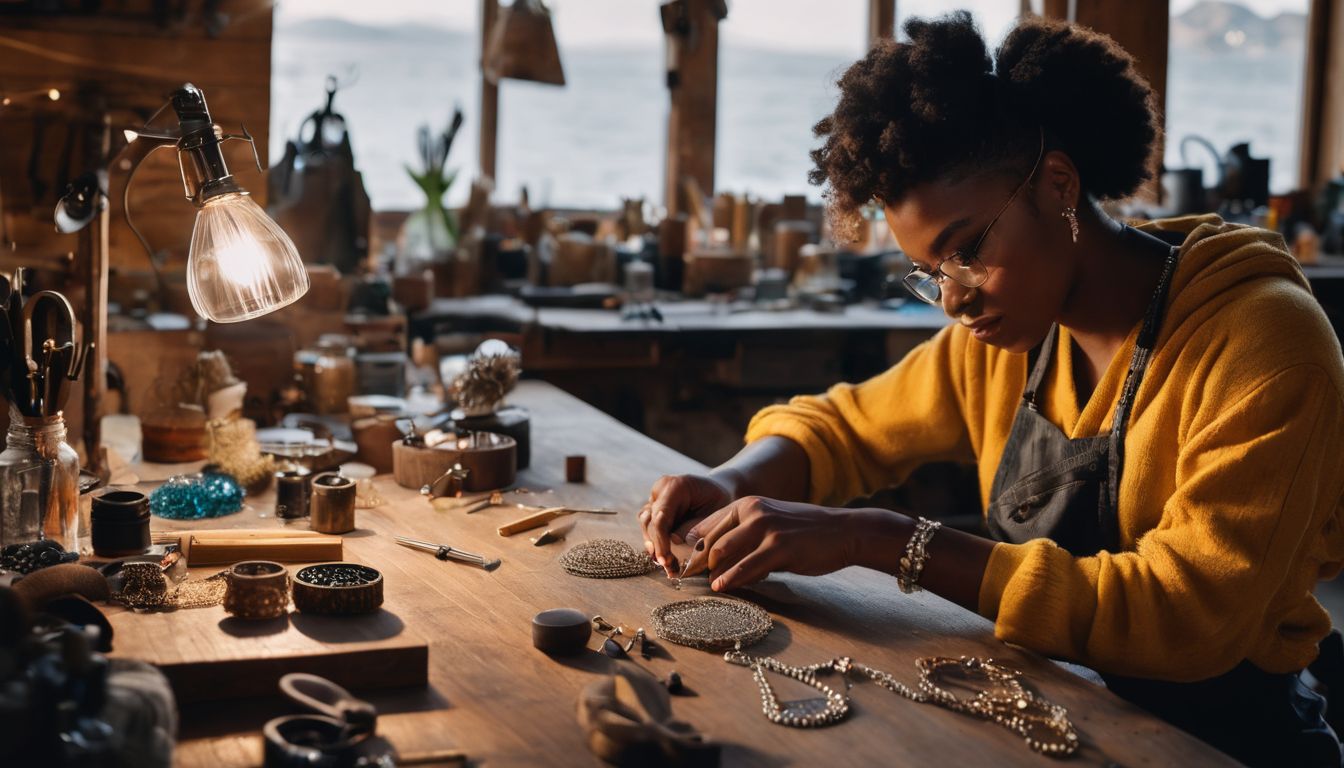

Leave a Reply